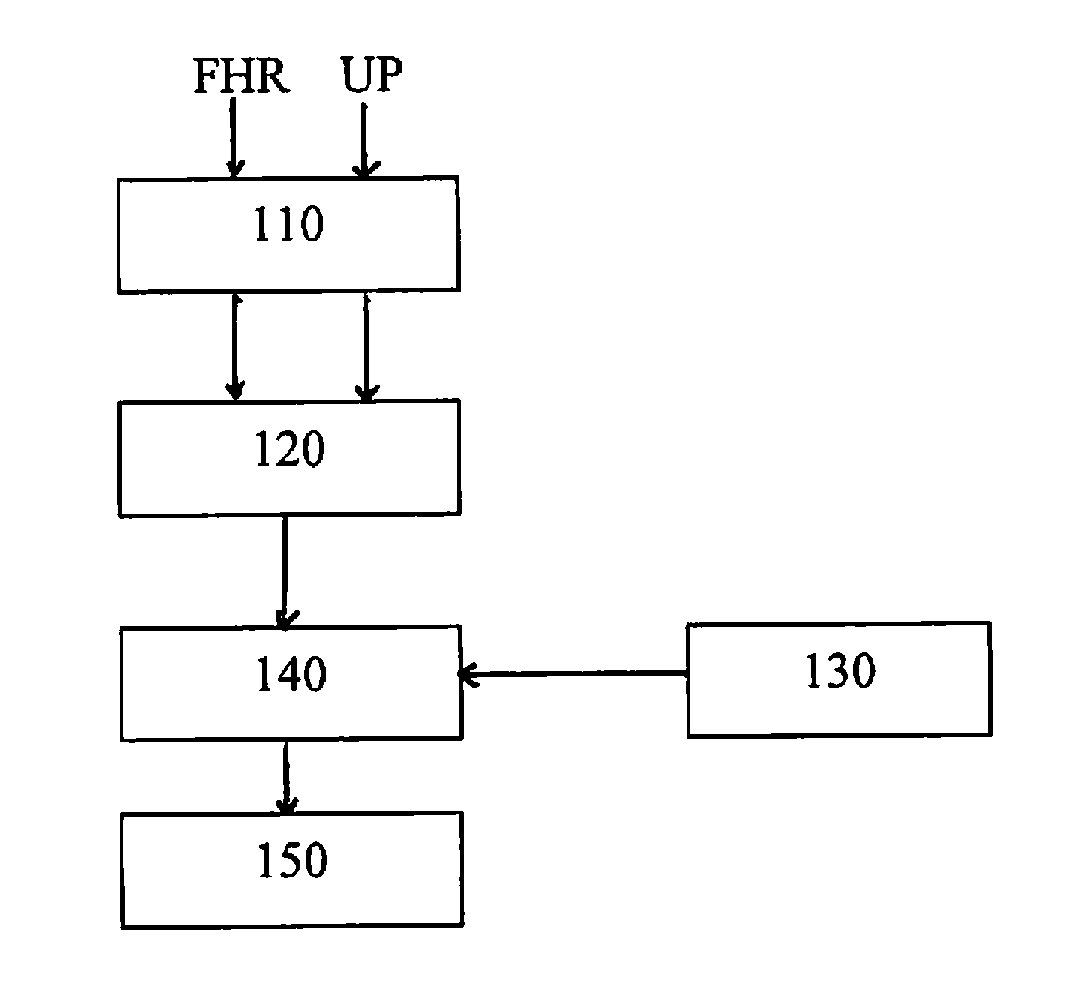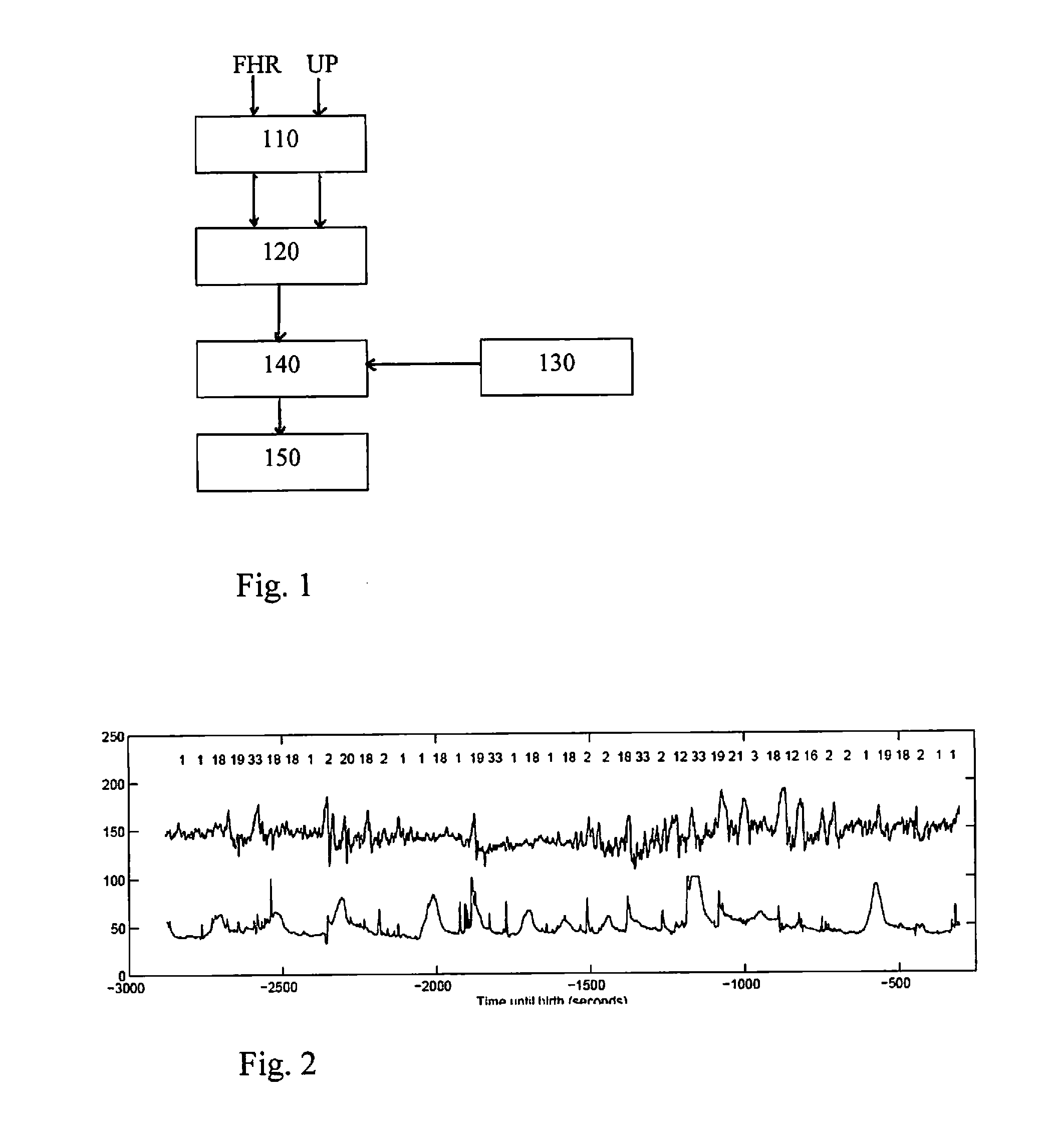Apparatus and method for feature extraction and classification of fetal heart rate
a technology of fetal heart rate and feature extraction, applied in the field of noninvasive methods and an apparatus for detection and monitoring of fetal health, can solve the problems of fetal hypoxemia, low oxygen level, insufficiency of uterine oxygen level,
- Summary
- Abstract
- Description
- Claims
- Application Information
AI Technical Summary
Benefits of technology
Problems solved by technology
Method used
Image
Examples
Embodiment Construction
[0018]The following detailed description of certain embodiments of the present invention will be made with reference to the accompanying drawings. In describing the invention, explanation of related functions or constructions known in the art are omitted for the sake of clearness in understanding the concept of the invention, to avoid obscuring the invention with unnecessary detail.
[0019]FIG. 1 shows an apparatus for feature extraction and classification of fetal heart rate including a scale with a range between 0 and 100, then estimating a baseline via mode estimation. The UP signal is generally a clean signal, smoothed by an averaging filter having a fixed sample length, e.g., a length of seventeen samples. For extraction by feature extractor 120, a Gaussian kernel method is preferably used to estimate the probability mass function (pmf) using bins centered at {0.5, 1.5, . . . , 99.5}, with kernel widths calculated using Equation 1:
Kernel width S=0.9 min {σ, 1.4826 Mu}, (1)
Where...
PUM
 Login to View More
Login to View More Abstract
Description
Claims
Application Information
 Login to View More
Login to View More - R&D
- Intellectual Property
- Life Sciences
- Materials
- Tech Scout
- Unparalleled Data Quality
- Higher Quality Content
- 60% Fewer Hallucinations
Browse by: Latest US Patents, China's latest patents, Technical Efficacy Thesaurus, Application Domain, Technology Topic, Popular Technical Reports.
© 2025 PatSnap. All rights reserved.Legal|Privacy policy|Modern Slavery Act Transparency Statement|Sitemap|About US| Contact US: help@patsnap.com



